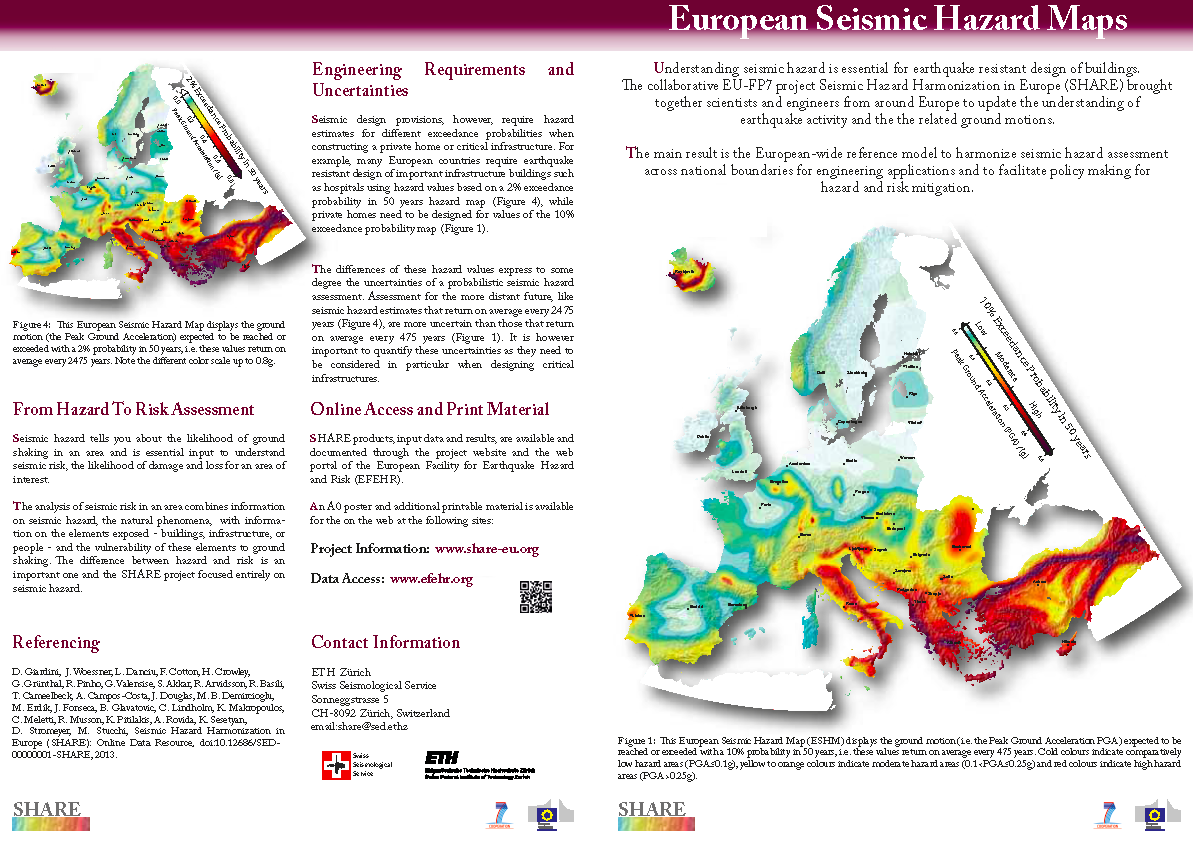Task 2.2: Critical review of seismic hazard practice (UPAV)
The critical review focuses on several key inputs required for seismic design. The first element considers how to approach performance based seismic design, with particular emphasis on how to ensure a uniform level of safety whilst allowing for modification of the seismic input within National Annexes. This considers the use of fixed return periods, including the selection and range of periods required for different levels of performance.
The greatest emphasis is placed upon the characterisation of the elastic design spectrum. This is an area where the current Eurocode provisions differ most significantly from many other recent seismic codes. The particular focus is on the extent to which the design spectrum is representative of the hazard across the likely range of spectral periods of interest for design. It also takes into consideration site amplification and damping modification. Discussion of the characterisation of the seismic response also leads directly into issues relating to the identification of the controlling earthquake scenarios also needed for design. Few codes address this last issue in detail, so it is here we appraise disaggregation approaches, and outline how the SHARE output can be used to provide information on controlling earthquake scenarios for design purposes. This also forms a basis for discussing the selection and scaling of acceleration time histories for dynamic analysis of structures.
Throughout the analysis there is frequent discussion of how SHARE, and in particular its means of disseminating seismic hazard information, can provide a practical framework for implementing revisions and modifications to Eurocode. These modifications may arise from different definitions of seismic input within National Annexes, or because of future reconsideration of the design provisions, which aim to ensure that Eurocode is consistent with best practice in seismic hazard analysis and design across the globe.
► Download Deliverable 2.2


